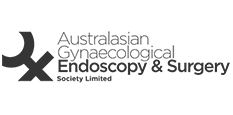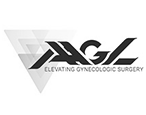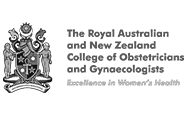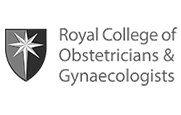Robotic / Laparoscopic Hysterectomy
What is a hysterectomy?
Hysterectomy is the medical term for the surgical removal of the uterus (womb) and 1 in 6 women in Australia undergo this operation. As the uterus is the site of fetal growth and the source of menstruation, following a hysterectomy pregnancy will no longer be possible and menstruation will cease. The uterus is located above the vagina and the lower part of the uterus that connects to the vagina is called the cervix (neck of the womb). The cervix is where the Cervical Screening Test (the new test that replaces the Pap smear) sample is taken from. During a total hysterectomy, the most commonly performed type of hysterectomy, the cervix is also removed. When the cervix is left behind, the procedure is called a subtotal hysterectomy. On either side of the uterus are the fallopian tubes and ovaries. The only role of fallopian tubes is for conception therefore they are removed at the time of a hysterectomy. The medical term for the removal of fallopian tubes is salpingectomy. Salpingectomy has been shown to reduce the risk of developing ovarian cancer as some forms of ovarian cancer arise from the ends of the fallopian tubes. Premenopausal ovaries on the other hand, play a very important role in providing crucial female hormones, therefore in the absence of ovarian pathology or familial risk of developing ovarian cancer they are not removed. These ovaries will continue to produce hormones until menopause. It is generally recommended not to remove the ovaries at the time of hysterectomy until the age of 65. If both of the ovaries have to be removed prior the menopause, the patient will go into “surgical” menopause. In which case hormone replacement can be of value. The removal of an ovary is called oophorectomy.
When is a hysterectomy required?
A hysterectomy is a major operation and is often considered as a last resort option when other forms of treatment are unsatisfactory.
Common conditions requiring a hysterectomy include:
- Heavy menstrual bleeding unresponsive to alternative treatments
- Large uterine fibroids causing severe symptoms of heavy bleeding, pain and/or pressure problem
- Debilitating pelvic pain from severe endometriosis or adenomyosis
- Advanced uterine prolapse
- Precancerous cell changes in the lining of the uterus or cervix.
What are the different ways a hysterectomy can be performed?
There are 4 different ways a hysterectomy can be performed:
Abdominal hysterectomy
This is the traditional way of performing a hysterectomy through a large abdominal incision. This form of hysterectomy should be avoided as it is more painful and has a longer recovery period. It is also associated with more complications.
Vaginal hysterectomy
A vaginal hysterectomy is when the procedure is performed through the vagina. This is possible when the uterus lies low in the vaginal canal due to weakened uterine support from natural childbirth. This approach does not allow thorough inspection and treatment of other pelvic conditions such as endometriosis.
Laparoscopic hysterectomy
Laparoscopic hysterectomy removes the uterus by employing the modern surgical technique of laparoscopic surgery, commonly known as “keyhole surgery”. Laparoscopic procedures are carried out through a series of small abdominal incisions the size of a keyhole (5-10mm). Through the small incisions, a thin surgical telescope and a number of long thin instruments are introduced into the abdomen to carry out the procedure. The combination of the magnified image projected to a surgical monitor, and the use of fine delicate instruments, allows for a more refined and precise surgery. Once the uterus is separated from its surroundings, it can often be removed through the vagina. As postoperative pain is usually related to the size of abdominal incision rather than the procedure carried out within the abdomen, laparoscopic hysterectomy is commonly less painful with a quicker recovery.
Robotic hysterectomy
Robotic surgery is the most advanced form of laparoscopic surgery and the current da Vinci Robotic System has a number of enhancements:
- 3D high definition vision with higher magnification
- Improved surgical instrumentation with the ability to bend and rotate, commonly referred to as “wristed” instruments which has a wider range of movements and greater degree of freedom than a human hand
- More precise control of surgical instruments through intuitive controls, tremor filtration and downscaling of movements
These innovations have proven to enable difficult and complex surgeries to be performed laparoscopically such as robotic prostatectomy.
Are robotic and laparoscopic hysterectomies safe?
All surgeries carry some degree of risk and the decision to undergo surgery is always based on the balance of risks versus benefits. Risks that apply to all surgeries include reaction to anaesthesia, wound infection, bleeding, injury to adjacent internal organs such as bowel, bladder and blood vessels and development of a blood clot in the leg, all of which are relatively uncommon. There are also patient factors that contribute to surgical risks, including your general wellbeing and level of health and fitness. The severity of your pathology and the complexity of the required surgery may also increase the surgical risk.
It is well supported by medical literature that doctors who perform large numbers of surgeries, commonly referred to as “high volume surgeons” have lower rates of complications. Dr Chou has performed over 2,000 cases of laparoscopic and robotic hysterectomies combined, of all levels of surgical complexity. Dr Chou is often referred patients requiring complex hysterectomies for various pathologies including:
Patients with severe endometriosis
Endometriosis is a condition where tissue that normally lines the inside of uterus, called endometrium, is present in the pelvis around the uterus. There are different stages of this disease with Stage IV being the most severe form. In stage IV endometriosis, the uterus and surrounding structure are often adherent (stuck) to each other with risk of harm during the process of separating them. A severe form of endometriosis known as deeply infiltrative endometriosis can invade into adjacent organs, including the bowel, bladder and ureters; in such cases a more complex multidisciplinary surgery is often required. This type of difficult surgery is well suited for robotic surgery.
Patients with very large fibroids
Fibroids are common muscular growths that arise from the uterine wall. In most cases they do not cause major problems and treatment is not required. However, it is possible to have multiple or large fibroids that cause significant pain, heavy bleeding and / or pressure symptoms. Hysterectomy for a large fibroid uterus can be challenging as the fibroid can obstruct access to crucial structures. Another challenge in these cases is the need to safely extract large volumes of tissue through small incisions. Dr Chou has over the years developed different techniques to deal with large fibroid uterus including (1) Ligation of uterine artery to minimise intraoperative blood loss, 2) Contained In-bag morcellation to safely remove the large fibroid uterus laparoscopically. The largest fibroid managed laparoscopically with the aid of a mini-laparotomy by Dr Chou was 4.2 kg.
Patients with numerous previous abdominal surgeries
Following multiple abdominal or pelvic surgeries, especially if there were complications, there is a higher chance of scar formation called adhesion that would stick internal organs to each other. Scarring between the bladder and the lower part of the uterus is common following Caesarean section delivery. These adhesions may need to be freed during the surgery and depending on the organs that are adhered to each other, there can be considerable risk of complications. These situations require careful assessment of the distorted anatomy and cautious meticulous surgery.
Patients with severe uterovaginal prolapse
Prolapse is a condition where pelvic organs drop due to the weakening of the pelvic floor following childbirth. It can involve the uterus and vaginal walls, and repair surgery can be carried out either vaginally or abdominally. In advanced stage prolapse, robotic or laparoscopic sacrocolpopexy is recognised as the preferred procedure of choice.
How long will I be in the hospital following a robotic or laparoscopic hysterectomy?
Robotic and laparoscopic surgery is considered “minimally invasive surgery” and in America, it is common for patients to be discharged the day of surgery or the day after. In Australia, it is more customary to be kept in hospital for 2 nights.
What is the recovery process following a robotic or laparoscopic hysterectomy?
The time it takes to recover from a robotic or laparoscopic hysterectomy varies for each individual but averages around 4-6 weeks. Some people may feel well enough after 2 weeks. Following surgery, there will be postoperative pain but it should be adequately managed with oral painkillers. Pain is often experienced around the pelvic region, at the skin incision sites, under the rib cage and around the shoulder tip. Regular use of painkillers as required is encouraged, not only to reduce discomfort but also to facilitate early mobilization. Physical activity plays an important role in minimising postoperative complications including the formation of blood clots in the leg and chest infections. Recovery will also be faster with early resumption of physical activity.
As your body expends a lot of energy whilst healing internal wounds, it is very common to feel lethargic and easily fatigued for a number of weeks. You will fully regain your energy and stamina over time.
There are no dietary restrictions post-surgery however the bowels often slow down for a brief period of time due to the pain medications and decrease in physical activity. One is therefore encouraged to maintain a high fiber diet with adequate hydration in order to avoid constipation.
Vaginal discharge can be present but is usually minimal. Around 7-10 days after surgery, there is often a slight increase in the amount of discharge due to reduced swelling around the suture line at the top of the vagina. This results in slightly larger gaps between the sutures through which fluid inside the abdomen can pass through. This is normal and should settle on its own. It can look like bleeding, but no further action is required. There is a small chance of infection which can cause symptoms such as heavy bleeding or discharge, pain and fever. You should contact your doctor promptly if this occurs as it may require antibiotic treatment.
Heavy lifting and strenuous physical activities should be avoided for 4 weeks following the surgery. Driving should be avoided for the first 1-2 weeks, and you should not drive whilst under the sedative influence of stronger painkillers.
In most cases, you will be able to return to office work in 4 weeks. For more physical work you may require 4-6 weeks.
Sexual intercourse should be avoided for the first 8 weeks following surgery.
Will I need to have cervical screening after a hysterectomy?
If you haven’t had any abnormal Cervical Screening Tests prior to your hysterectomy, no further cervical screening is required.
Helpful Links:
Patient information on Hysterectomy from The Royal Australian and New Zealand Collage of Obstetricians and Gynaecologists
Patient information on Robotic Hysterectomy from the da Vinci Surgery Website.















